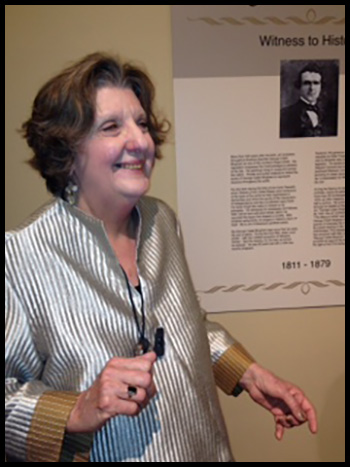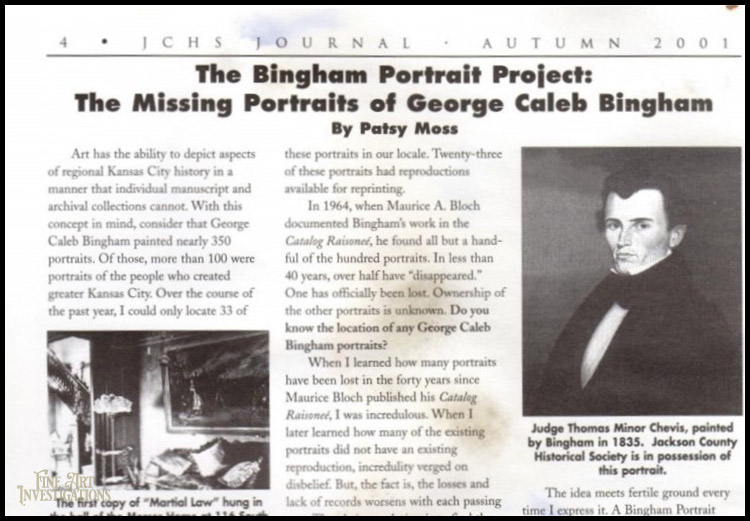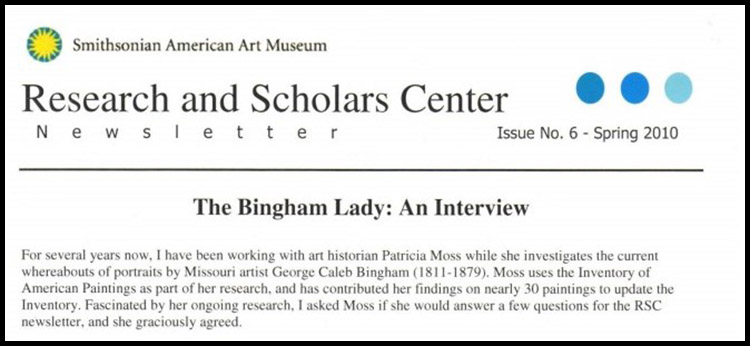The Bingham Lady
In 2001, I wrote the words below, not knowing they would lead me to become the “Bingham Lady.”
"What I have discovered through Bingham’s portraits is a winding story that is just beginning to unfold. By using Bingham’s portraits as guideposts, I have found an inroad to history that has charmed me and has the magic to keep me going…Art has the potential not only to make history “user friendly” but also to direct us to yet undiscovered aspects of our past."
I had also discovered was that many portraits were lost. So, with the help of David W. Jackson, then of the Jackson County [Missouri] Historical Society, we sent out a plea via the society’s journal.

Patricia Moss
"The Bingham Lady"

From civic-minded art collectors, word of the locations of the “lost” portraits slowly reached me. The Clay County Historical Society took the project to heart, too, and found and photographed Bingham portraits of Clay County pioneers.
I interrupted my search to attend graduate school, but possible new Bingham portraits were brought to my attention. For a class in connoisseurship, I studied one portrait intensively. That study led to the Evolution of an Art Detective.
After earning double master’s degrees in Art History and History, I returned to the quest. From a steady flow of possible new Bingham portraits, I learned to distinguish the work of the Missouri Artist from his students and colleagues. With each located portrait, and with the owner’s permission, I contacted the Smithsonian’s Inventory of American Paintings. In 2010 the Smithsonian’s Research and Scholar’s Center published

